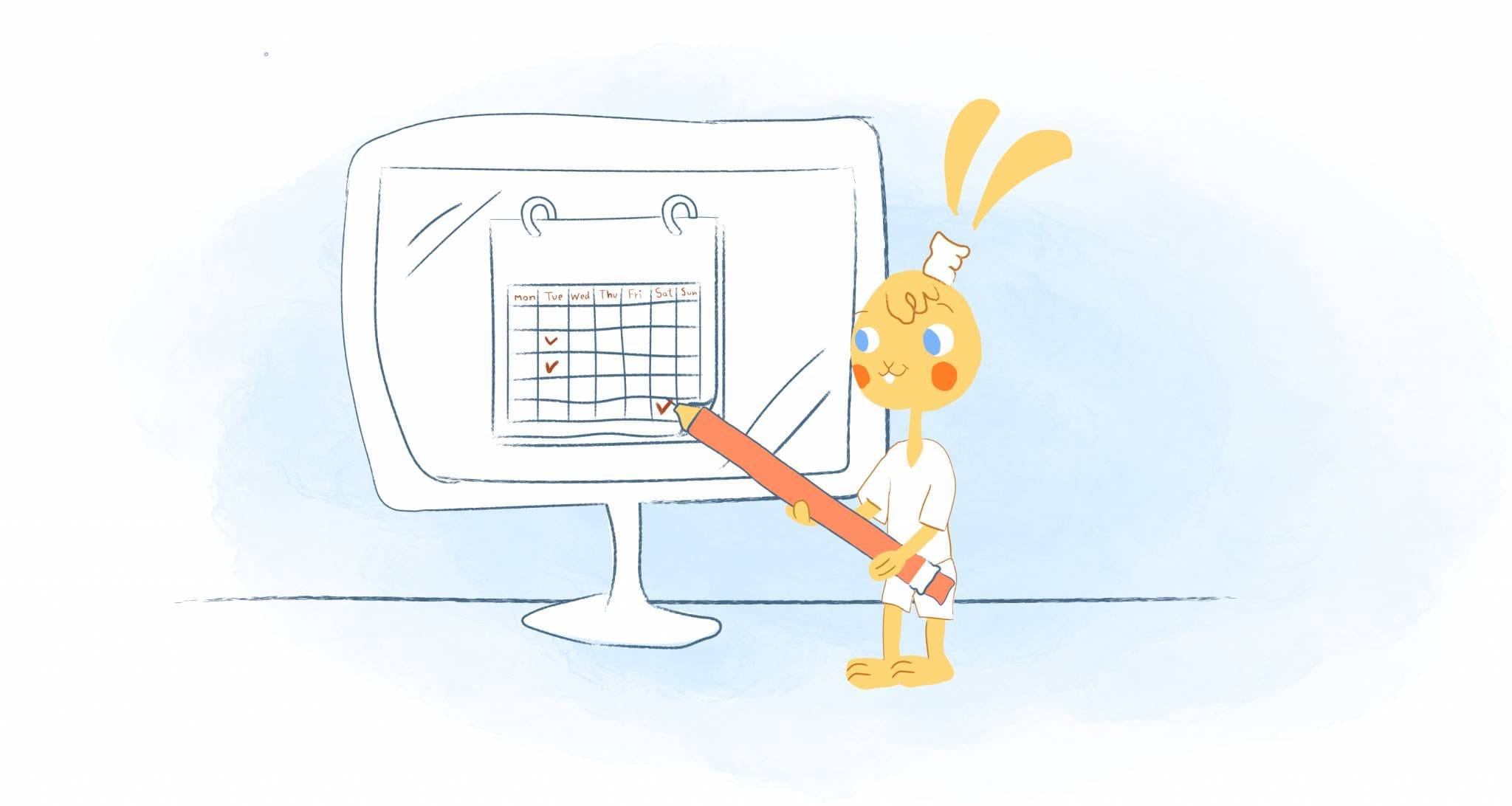

Even if you’re not working remotely full-time, a whooping 70 percent of people around the world work remotely at least once a week. This means that even if you’re in proximity to your colleagues, there may be days when the meeting doesn’t take place in a conference room. This is where virtual meeting etiquette becomes important.
Instead, it’s a virtual meeting where attendees can participate in the meeting without having to actually be in the same room.
Since the entire Calendar team works remotely, virtual meetings have become a necessity for us. But, for a virtual meeting to be successful we’ve first had to create a strong culture with our virtual team, as well as learning the proper virtual meeting etiquette.
Want to know the etiquette rules and tips we’ve found most effective? Here’s are the top virtual meeting etiquette tips for business owners:
Choose the right technology.
In order to have a successful virtual meeting you first need to use the right software. While there’s all sorts of awesome gadgets, like telepresence robots, you want to keep things simple. After all, you don’t want your team to spend too much time setting-up cameras, downloading a ton of software, or loading PowerPoint presentations.
Instead, keep things to a minimum. You can use tried and true tools like Skype, Facetime, GoToMeeting, and Join.me to communicate virtually with your team. If you need to exchange documents, stick with Dropbox or Google Drive.
To make sure that everyone attends the meeting, use a scheduling tool like Calendar to pick the best date and time for everyone without having to exchange a million emails.
Keep your hands off the keyboard.
Have you ever been in an office full of people typing on keyboards. Some people find it relaxing, but others find it distracting. The same is true while on a virtual meeting.
Whether you’re typing notes or chatting with a friend secretly, keep you hands off the keyboard. This way the meeting has your complete attention and you aren’t annoying the other participants.
If you want to take notes, jot them down by hand. It won’t distract anyone else and research has found that you retain more information when write notes by hand.
Only keep essential windows and programs open.
We’ve all been guilty of this form time-to-time. You’re on a conference call and are sneakily checking your email, chatting with people on instant message, or scrolling social media. You may even be busy setting your fantasy football lineup or just browsing the internet.
If you thought the sound of keyboards was distracting, just think how email and message notifications sound?
It’s not respectful to everyone to be not be present during the meeting. That’s why you should avoid temptation in the first place by closing all non-essential programs and windows. The only programs that should be open are the ones that you need for the meeting, such as documents and presentations.
Stop multitasking.
It’s been found that 73 percent of employees do other work while attending a meeting. The fact is, multitasking is a myth and should be discouraged. Some estimates have found that you can lose up to 40 percent of your productivity by multitasking.
On top of reminding invitees to close non-essential windows and programs, ask them to leave their phones in the other room. If they’re using their phones for the meeting, ask them to turn off push notifications so that they don’t get distracted.
Most importantly, if you’re the famialitor, set a good example by being fully present and not working on something else during the meeting.
Mute your microphone when you’re not speaking.
Even if you’ve followed the tips above, there could be some unexpected background noise like your dog barking, children playing, or sirens flying down the road. If you take the meeting in a quiet area, like a coffee shop, there’s still background music and noise from other customers. This may not seem like much, but it can be distracting and annoying to everyone else attending the meeting.
To prevent this, simply keep your microphone on mute until it’s your time to speak — other tools allow the host to have complete control on the sound. It does necessitate raising your hand to note you want to speak. If this is uncomfortable to your team — assure them that each one will be called on and they can address any problem during their “turn.”
Speak clearly and concisely.
Sure. Technology has come a long way. But, it’s not flawless. You can still expect delays occasionally. That’s why virtual meetings should move a slightly slower pace.
As Susan Colaric, assistant vice president for Instructional Technology at Saint Leo University in Saint Leo, Florida, explains, there’s usually a two to three second delay after someone speaks.
Make sure you pause after asking a question. If you’re on video, you may want to raise your hand when asking a question.
Most importantly, make sure that you speak clearly and concisely. Enunciating your words gets around any muffled microphones or poor-sounding speakers.
Get dressed.
The beauty about working from home is that you don’t always have to wear formal, professional attire. But, if you’re on video you don’t wear to be wearing pajamas and a serious case of bead head.
Be professional and courteous by dressing appropriately and combing your hair. As an added perk you’ll be more focused and productive because you’ve dressed for success.
Making your background appropriate for a business situation.
Don’t embarrass yourself in front of your co-workers. That means letting them see your pile of dirty clothes, inappropriate posters or knick knacks — or children running wildly through the house. Find a quiet space that is appears some sort professional and is free of distractions.
Make sure the meeting isn’t a waste of time.
This is “meetings 101” right here — whether they’re in person or remotely.
Listen to the participants.
They won’t have a problem telling you if the meeting is necessary or not. You may be able to cover everything you want to discuss via email or Slack.
Keep the meeting short and concise.
There’s no need to have a meeting that’s longer than 30 minutes. Assign a facilitator to make sure that the meeting stays on-track.
Schedule a start and end time.
Do not extend your meeting time. Don’t change the times at the last minute. Stick to the schedule.
Prepare an agenda.
When you have your agenda ready — send it out — along with any other relevant materials, to participants in advance. This will define the goals and purpose of the meeting, which in turn, will keep everyone engaged.
Make sure everything is working properly.
If you’re calling into to a teleconference, call and login at five-minutes prior to the meeting to make sure it’s up and running. If hosting a video conference, do the same. This way you aren’t starting a meeting late because the tech isn’t working properly.











Deanna Ritchie
Editor-in-Chief at Calendar. Former Editor-in-Chief and writer at Startup Grind. Freelance editor at Entrepreneur.com. Deanna loves to help build startups, and guide them to discover the business value of their online content and social media marketing.